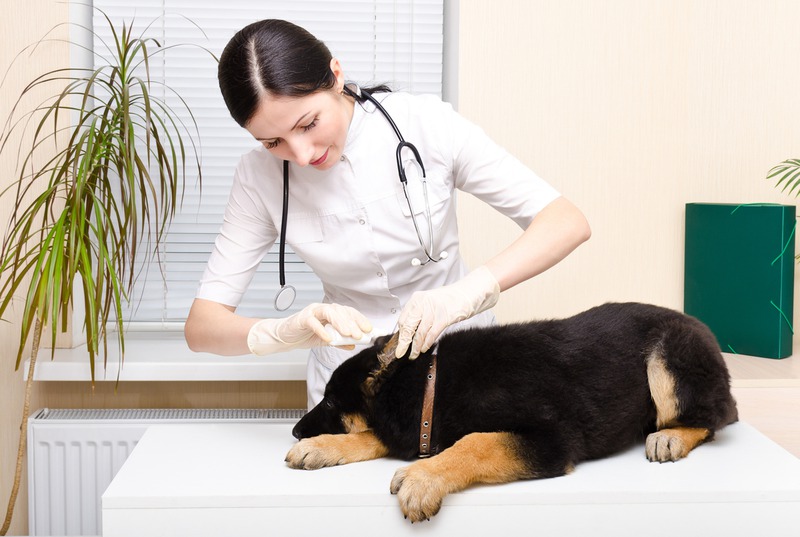As pet owners, we all want our pets to be happy and well. But sometimes, pets get sick and catch germs, just like people do. It’s very important to notice the early warning signs of sickness so we can quickly get help from a vet. Catching the sickness early can really help your pet get better faster. In this article, we’re going to talk about the usual signs that your pet might be sick. Get ready to take notes so that you can learn what to look out for to keep your pets healthy.
Understanding Infections in Pets
Infections in pets can arise from various causes, including bacteria, viruses, fungi, and parasites. These infectious agents can affect different parts of the body, leading to a wide range of health issues. Knowing what symptoms to look out for is key to preventing minor ailments from turning into more serious health problems.
General Signs of Infections
Let’s start with some general indicators that can suggest your pet might be fighting an infection.
-
Lethargy: One of the first signs you might notice is a lack of energy. If your usually playful pet starts to look more like a couch potato, it could be a red flag.
-
Loss of Appetite: Another clue is a sudden disinterest in food. Keep an eye on their eating habits; a hungry pet is often a healthy pet.
-
Unusual Discharges: Weird goop coming from the eyes, ears, or nose isn’t just unsightly—it could indicate an infection. Similarly, excessive drooling or unusual smells should raise your concern.
-
Breathing Trouble: Struggling to breathe, wheezing, or coughing should prompt a visit to your vet, as these can signal either respiratory infections or other serious conditions.
-
Gastrointestinal Upsets: Diarrhea, vomiting, or changes in bowel movements are not pleasant for anyone involved and can be symptoms of infections affecting the digestive system.
But these general signs are just the starting point. Infections can present in more specific ways depending on the area affected.
Signs of Skin Infections
The skin is often a barrier to infection, but once compromised, it can show overt signs of trouble. Here’s what to watch for:
-
Redness and Swelling: The skin may appear red and swollen if infected.
-
Itching: Watch your pet for excessive scratching or licking, which might indicate an infection or allergies.
-
Hot Spots: These are areas of very irritated skin that can become infected when a pet repeatedly chews or licks them.
-
Sores or Abscesses: Open wounds or pus-filled bumps are clear cries for help and possible signs of localized infections.
Luckily, many skin infections can be treated effectively if caught early. A vet can help pinpoint the issue and recommend the right remedy.
Eye and Ear Infections
Your pet’s eyes and ears are also prone to infections, which can be quite a nuisance for them. Keep a lookout for:
-
Eye Redness: Just like us, red eyes in pets can indicate an infection.
-
Discharge: Gunky or watery discharge from the eyes or ears can be a clear sign of trouble.
-
Head-Shaking or Tilting: This behavior may reflect discomfort or pain due to an ear infection.
If you notice any of these signs, your pet may need a thorough examination and possibly veterinary dental services if the infection involves their teeth or gums.
Respiratory Infections
As in humans, respiratory infections in pets can affect either the upper or lower respiratory tracts. Symptoms to look out for include:
-
Persistent Coughing or Gagging: A persistent cough can be a sign of a serious infection, especially if it’s dry and hacking.
-
Nasal Discharge: A runny nose can accompany many respiratory infections.
-
Sneezing: Just like humans, pets can sneeze when their respiratory tracts are irritated or infected.
If respiratory symptoms persist, it may be time to seek out an internal medicine vet in Clearlake, CA or wherever you’re located, for specialized care.
Urinary Tract Infections
Urinary issues in pets are not to be taken lightly. Here are some signs that may indicate a urinary tract infection:
-
Straining to Urinate: If your pet seems to be having a hard time going to the bathroom, pay attention.
-
Bloody or Cloudy Urine: This can be a tell-tale sign of a urinary tract infection or something even more serious.
-
Inappropriate Urination: Accidents in the house by a previously house-trained pet could signal trouble.
Early intervention is crucial to prevent the infection from spreading to the kidneys, which can be life-threatening.
What to Do If You Suspect an Infection
If you spot any of these signs, it’s wise to book an appointment with your veterinarian. But what can you do in the meantime? Here are some tips:
-
Keep a record of symptoms to provide a detailed history to your vet.
-
Maintain a calm and comfortable setting for your pet, as stress can exacerbate health issues.
-
Ensure that your pet stays hydrated.
-
Avoid self-diagnosing or treating your pet without professional advice. Over-the-counter medications for humans can be dangerous for pets.
For some infections, especially if they’re severe or aren’t responding to initial treatments, your vet might suggest vet surgery as an option. You can always discuss the potential benefits and risks with your veterinarian to make an informed decision.
Final Thoughts
Monitoring your pet’s health for signs of infection is key to ensuring they live a long, happy life. Remember that prompt veterinary attention can make all the difference when it comes to treating infections. Keep an eye out for unusual behaviors or physical changes—your pet relies on you to be their health advocate. By staying vigilant and informed, you’re not just being a responsible pet owner; you’re also giving your beloved companion the best chance at a healthy, vibrant life.


